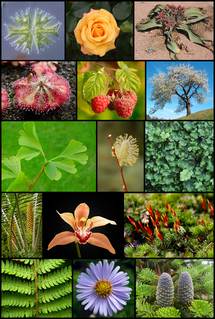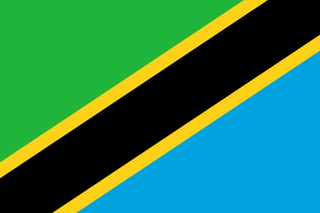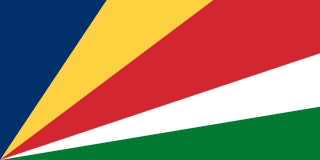
Olea is a genus of about 40 species in the family Oleaceae, native to warm temperate and tropical regions of the Middle East, southern Europe, Africa, southern Asia, and Australasia. They are evergreen trees and shrubs, with small, opposite, entire leaves. The fruit is a drupe. Leaves of Olea contain trichosclereids.

Pennisetum is a widespread genus of plants in the grass family, native to tropical and warm temperate regions of the world. They are known commonly as fountaingrasses

Foetidia is a genus of flowering plants first described as a genus in 1788. Most authors place the genus in the family Lecythidaceae, the sole genus in the subfamily Foetidioideae, but some prefer to treat it as a distinct family, the Foetidiaceae. It is native to eastern Africa and to various islands in the Indian Ocean.
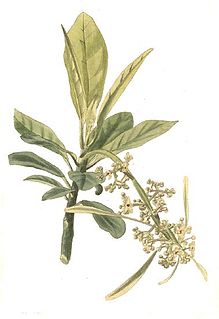
Omphalea is a plant genus of the family Euphorbiaceae first described as a genus in 1759. It is native to tropical parts of the Americas, the West Indies, Asia, Australia, and Africa.

Flagellaria is the sole genus in the flowering plant family Flagellariaceae with only five species. The family has historically been recognized by few taxonomists. The APG II system, of 2003, does recognize such a family, and assigns it to the order Poales in the clade commelinids, in the monocots.

The genus Basella is the type genus of the plant family Basellaceae. Basella contains five known species. Three species are endemic to Madagascar, and one is endemic to southeastern Africa. The fifth is widespread across Southeast Asia, the Indian Subcontinent, and New Guinea.

Dactyloctenium is a genus of Asian, African, and Australian plants in the grass family. Common name is crowfoot grasses.
Lepturus is a genus of plants in the grass family, native to Asia, Africa, Australia, and various islands in the Indian and Pacific Oceans.

Dypsis is a genus of flowering plants in the Arecaceae family. They are slender, evergreen palms with yellow flowers carried in panicles amongst the pinnate leaves. Many Dypsis species have aerial branching, a rare growth habit among palms. Some have marcescent leaves that remain attached after death and trap litter for nutrients.

Mimusops is a genus of plants in the family Sapotaceae described as a genus by Linnaeus in 1753.
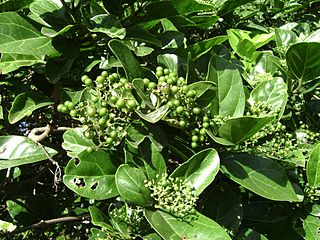
Premna is a genus of flowering plants in the mint family, Lamiaceae, first described for modern science in 1771. It is widespread through tropical and subtropical regions in Africa, southern Asia, northern Australia, and various islands in the Pacific and Indian Oceans.
- Premna acuminataR.Br. - Australia, New Guinea
- Premna acutataW.W.Sm. - southwestern China
- Premna albaH.J.Lam - Palau
- Premna ambongensisMoldenke - Madagascar
- Premna amplectensWall. ex Schauer - Thailand, Myanmar
- Premna angolensisGürke - tropical Africa
- Premna angustifloraH.J.Lam - Palau
- Premna annulataH.R.Fletcher - Thailand, Laos, Vietnam
- Premna aureolepidotaMoldenke - Madagascar
- Premna balakrishnaniiA.Rajendran & P.Daniel - Tamil Nadu
- Premna balansaeDop - Vietnam
- Premna barbataWall. ex Schauer - Indian Subcontinent, Myanmar
- Premna bengalensisC.B.Clarke - Indian Subcontinent, Myanmar, Vietnam
- Premna bequaertiiMoldenke - Uganda, Rwanda, Zaïre
- Premna bracteataWall. ex C.B.Clarke - Himalayas, Tibet, Yunnan, Nepal, Assam, Bhutan, Myanmar
- Premna cambodianaDop - Cambodia, Vietnam
- Premna cavalerieiH.Lév - China
- Premna chevalieriDop - Thailand, Laos, Vietnam, China
- Premna chrysoclada(Bojer) Gürke - Kenya, Tanzania, Guinea-Bissau
- Premna collinsaeCraib - Thailand
- Premna confinisC.Pei & S.L.Chen ex C.Y.Wu - China
- Premna congolensisMoldenke - Zaïre, Angola, Cabinda
- Premna cordifoliaRoxb. - Thailand, Vietnam, Malaya
- Premna coriaceaC.B.Clarke - Indian Subcontinent, Thailand, Andaman Islands
- Premna corymbosaRottler - India, Sri Lanka, Andaman & Nicobar Islands
- Premna crassaHand.-Mazz. - Vietnam, China
- Premna debianaA.Rajendran & P.Daniel - Arunachal Pradesh
- Premna decaryiMoldenke - Madagascar
- Premna decurrensH.J.Lam - Indonesia
- Premna discolorVerdc. - Kenya
- Premna dubiaCraib - Laos, Thailand, Vietnam
- Premna esculentaRoxb. - Assam, Bangladesh, Myanmar, Thailand
- Premna fohaiensisC.Pei & S.L.Chen ex C.Y.Wu - China (Yunnan)
- Premna fordiiDunn - China
- Premna fulvaCraib - Indochina, Indonesia, China
- Premna garrettiiH.R.Fletcher - Thailand
- Premna glaberrimaWight - southern India
- Premna glandulosaHand.-Mazz. - China (Yunnan)
- Premna gracillimaVerdc. - Kenya, Tanzania
- Premna grandifoliaA.D.J. Meeuse, illegitimate name, = Premna hutchinsonii
- Premna grossaWall. ex Schauer - Myanmar
- Premna guillauminiiMoldenke - New Caledonia
- Premna hainanensisChun & F.C.How - China (Hainan)
- Premna hans-joachimiiVerdc. - Tanzania
- Premna henryana(Hand.-Mazz.) C.Y.Wu - China
- Premna herbaceaRoxb. - Himalayas, Yunnan, Indian Subcontinent, Southeast Asia, Indonesia, New Guinea, northern Australia
- Premna hildebrandtiiGürke - Zaire, Kenya, Tanzania, Mozambique, Zimbabwe
- Premna hispidaBenth. - West Africa
- Premna humbertiiMoldenke - Madagascar
- Premna hutchinsoniiMoldenke - Ivory Coast
- Premna interruptaWall. ex Schauer - southern China, Himalayas, Indochina
- Premna jalpaigurianaT.K.Paul - West Bengal
- Premna khasianaC.B.Clarke - Assam, Thailand
- Premna lepidellaMoldenke - Madagascar
- Premna ligustroidesHemsl - China
- Premna longiacuminataMoldenke - Madagascar
- Premna longifoliaRoxb. - Himalayas
- Premna longipetiolataMoldenke - Madagascar
- Premna lucensA.Chev. - West Africa
- Premna macrophyllaWall. ex Schauer - Assam, Indochina
- Premna madagascariensisMoldenke - Madagascar
- Premna mariannarumSchauer - Mariana Islands
- Premna matadiensisMoldenke - Zaïre, Angola
- Premna maximaT.C.E. Fr. - Kenya
- Premna mekongensisW.W.Sm. - China (Yunnan)
- Premna micranthaSchauer - India, Assam, Bangladesh
- Premna microphyllaTurcz. - Japan, Ryukyu Islands, China
- Premna millefloraC.B.Clarke - Assam
- Premna milneiBaker - Nigeria, Bioko
- Premna minorDomin - Queensland
- Premna mollissimaRoth - Indian Subcontinent, Yunnan, Indochina, Philippines
- Premna mooiensis(H.Pearson) W.Piep - Mozambique, Swaziland, South Africa
- Premna mortehaniiDe Wild - Zaïre
- Premna mundanthuraiensisA.Rajendran & P.Daniel - Tamil Nadu
- Premna neurophyllaChiov. - Ethiopia
- Premna oblongataMiq. - Indonesia, Philippines
- Premna odorataBlanco - - Indian Subcontinent, Yunnan, Southeast Asia, New Guinea, northern Australia; naturalized in Miami-Dade County in Florida
- Premna oliganthaC.Y.Wu - China
- Premna oligotrichaBaker - Ethiopia, Somalia, Kenya, Tanzania
- Premna orangeanaCapuron - Madagascar
- Premna paisehensisC.Pei & S.L.Chen - China (Guangxi)
- Premna pallescensRidl.- Borneo, Indonesia
- Premna parasiticaBlume - Indonesia
- Premna parvilimbaC.Pei - China (Yunnan)
- Premna paucinervis(C.B.Clarke) Gamble - Kerala, Tamil Nadu
- Premna paulobarbataH.J.Lam - Mariana Islands
- Premna perplexansMoldenke - Madagascar
- Premna perrieriMoldenke - Madagascar
- Premna pinguisC.B.Clarke - Assam, Bangladesh, Myanmar, Java
- Premna politaHiern - Angola
- Premna procumbensMoon - India, Bangladesh, Sri Lanka
- Premna protrusaA.C.Sm. & S.Darwin - Fiji
- Premna puberulaPamp. - China
- Premna pubescensBlume - Indonesia, Philippines, Christmas Island
- Premna puerensisY.Y.Qian - China (Yunnan)
- Premna punduanaWall. ex Schauer - Arunachal Pradesh, Assam, Bangladesh
- Premna puniceaC.Y.Wu - China (Yunnan)
- Premna purpurascensThwaites - Sri Lanka
- Premna quadrifoliaSchumach. & Thonn. - West Africa
- Premna rabakensisMoldenke - Cambodia
- Premna regularisH.J.Lam - Philippines, Indonesia, New Guinea
- Premna repensH.R.Fletcher - Thailand
- Premna resinosa(Hochst.) Schauer - East Africa, Arabian Peninsula, India
- Premna richardsiaeMoldenke - Tanzania
- Premna rubroglandulosaC.Y.Wu - China (Yunnan)
- Premna scandensRoxb. - China (Yunnan), Himalayas, Andaman Island, Indochina
- Premna schimperiEngl - East Africa
- Premna schliebeniiWerderm. - Tanzania, Mozambique
- Premna scoriarumW.W.Sm. - Tibet, Yunnan, Myanmar
- Premna senensisKlotzsch - eastern + central Africa
- Premna serrataH.R.Fletcher - Thailand
- Premna serratifoliaL. - widespread in East Africa, the Indian Subcontinent, Southeast Asia, northern Australia, islands of Pacific + Indian Oceans
- Premna siamensisH.R.Fletcher - Thailand
- Premna stenobotrysMerr. - Vietnam
- Premna steppicolaHand.-Mazz. - China
- †Premna sterculiifoliaKing & Gamble - Malaya but extinct
- Premna straminicaulisC.Y.Wu - China (Yunnan)
- Premna subcapitataRehder - China
- Premna sulphurea(Baker) Gürke - Angola
- Premna sunyiensisC.Pei - China (Guangdong)
- Premna szemaoensisPei - China (Yunnan)
- Premna tahitensisJ.Schauer - many islands of the Pacific
- Premna tanganyikensisMoldenke - Tanzania, Mozambique
- Premna tapintzeanaDop - China (Yunnan)
- Premna teniiC.Pei - China (Yunnan)
- Premna thoreliiDop - Laos
- Premna thwaitesiiC.B.Clarke - Sri Lanka
- Premna tomentosaWilld. - Indian Subcontinent, Southeast Asia, Queensland, Solomon Islands
- Premna trichostomaMiq. - Southeast Asia, Indonesia, New Guinea
- Premna urticifoliaRehder - China (Yunnan)
- Premna velutinaGürke - Burundi, Kenya, Tanzania, Mozambique
- Premna venulosaMoldenke - Madagascar
- Premna wightianaSchauer - India, Sri Lanka
- Premna wuiBoufford & B.M.Barthol. - China (Yunnan)
- Premna yunnanensisW.W.Sm - China
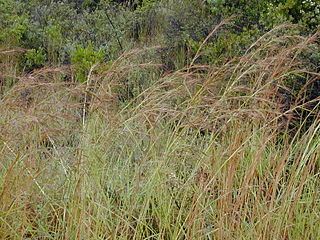
Hyparrhenia is a genus of grasses. Many species are known commonly as thatching grass.
Cyrtococcum is a genus of Asian, African, and Pacific Island plants in the grass family.

Sclerodactylon is a genus of plants in the grass family, native to eastern Africa and to various islands in the Indian Ocean.

Stenotaphrum is a widespread genus of plants in the grass family.
Microcoelia is a genus of orchids native to sub-Saharan Africa as well as to Madagascar and other islands of the Indian Ocean.
- Microcoelia aphylla(Thouars) Summerh. - from Kenya and Uganda south to KwaZulu-Natal, plus Madagascar, Mauritius and Réunion
- Microcoelia aurantiaca(Schltr.) Summerh. - Madagascar
- Microcoelia bispiculataL.Jonss. - Madagascar
- Microcoelia bulbocalcarataL.Jonss. - Príncipe, Cameroon, Gabon, Uganda, Rwanda
- Microcoelia caespitosa(Rolfe) Summerh. in J.Hutchinson & J.M.Dalziel - western and central Africa from Liberia to Zaïre and Uganda
- Microcoelia corallinaSummerh. - Tanzania, Mozambique, Malawi
- Microcoelia cornuta(Ridl.) Carlsward - Madagascar, Comoros
- Microcoelia decaryanaL.Jonss. - Madagascar
- Microcoelia dolichorhiza(Schltr.) Summerh. - Madagascar
- Microcoelia elliotii(Finet) Summerh. - Madagascar
- Microcoelia exilisLindl. - from Kenya and Uganda south to KwaZulu-Natal, plus Madagascar
- Microcoelia gilpinae(Rchb.f. & S.Moore) Summerh. - Madagascar
- Microcoelia globulosa(Hochst.) L.Jonss. - from Nigeria east to Eritrea, south to Angola and Zimbabwe
- Microcoelia hirschbergiiSummerh. - Zaïre, Zambia
- Microcoelia jonssoniiSzlach. & Olszewski - Central African Republic
- Microcoelia koehleri(Schltr.) Summerh. - from Nigeria to Tanzania, south to Zimbabwe
- Microcoelia konduensis(De Wild.) Summerh - western and central Africa
- Microcoelia leptostele(Summerh.) L.Jonss. - Central African Republic, Zaïre
- Microcoelia macrantha(H.Perrier) Summerh. - Madagascar
- Microcoelia macrorhynchia(Schltr.) Summerh. in J.Hutchinson & J.M.Dalziel - central Africa
- Microcoelia megalorrhiza(Rchb.f.) Summerh. - Kenya, Tanzania, Malawi
- Microcoelia microglossaSummerh. - central Africa
- Microcoelia moreauaeL.Jonss - Kenya, Tanzania, Zimbabwe
- Microcoelia nyungwensisL.Jonss. - Rwanda
- Microcoelia obovataSummerh. - from Kenya south to KwaZulu-Natal
- Microcoelia ornithocephalaP.J.Cribb - Malawi
- Microcoelia perrieri(Finet) Summerh. - Madagascar
- Microcoelia physophora(Rchb.f.) Summerh. - Kenya, Tanzania, Madagascar
- Microcoelia sanfordiiL.Jonss - Cameroon
- Microcoelia smithii(Rolfe) Summerh. - Kenya, Tanzania, Malawi
- Microcoelia stolzii(Schltr.) Summerh. - Kenya, Tanzania, Malawi, Mozambique, Zambia, Zimbabwe
Danais is a genus of flowering plants in the family Rubiaceae. Most species are native to Madagascar; at least three others are distributed in Tanzania, Comoros, and the Mascarene Islands.

Platostoma is a genus of flowering plants in the mint family, Lamiaceae, first described as a genus in 1818. It is native to tropical parts of Africa, southern Asia, Papuasia, and Australia. Mesona and Acrocephalus has been known as its synonyms.

Octotropideae is a tribe of flowering plants in the family Rubiaceae and contains about 103 species in 18 genera. Its representatives are found in the paleotropics.
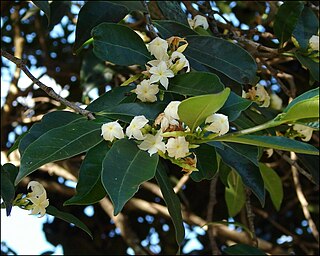
Mascarenhasia is a genus of plant in family Apocynaceae first described as a genus in 1844. It is native to Africa and a few islands in the Indian Ocean. Several species are endemic to Madagascar.
- Mascarenhasia arborescensA.DC. - Kenya, Tanzania, Zaire, Malawi, Mozambique, Zimbabwe, Comoros, Madagascar; naturalized in Seychelles
- Mascarenhasia havetiiA.DC. - Madagascar
- Mascarenhasia lanceolataA.DC. - Madagascar
- Mascarenhasia lisianthifloraA.DC. - Madagascar
- Mascarenhasia macrosiphonBaker - Madagascar
- Mascarenhasia rubraJum. & H.Perrier - Madagascar
- Mascarenhasia speciosaScott-Elliot - Madagascar
- Mascarenhasia tampinensisPichon - Madagascar
